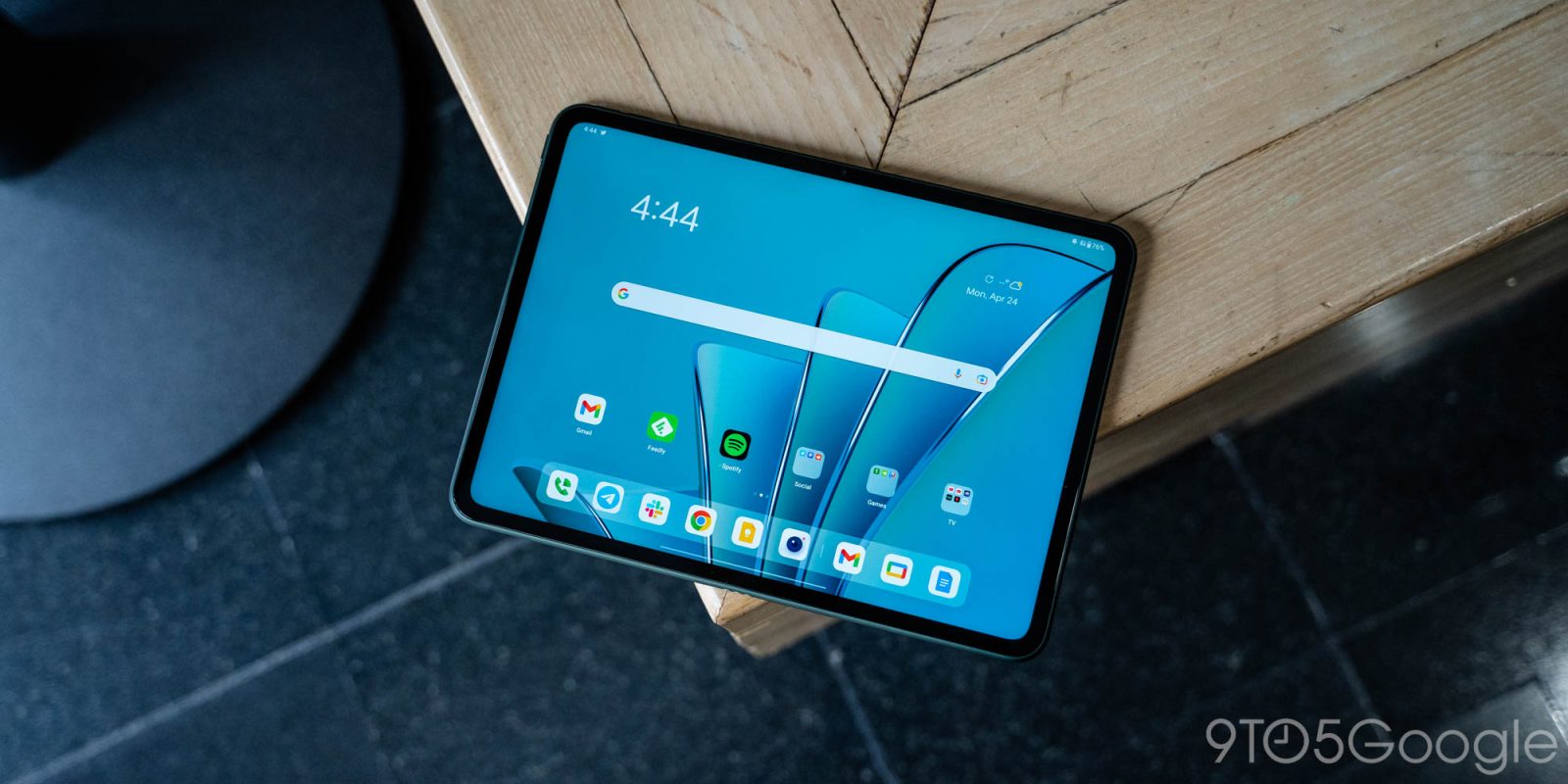
The OnePlus Pad has a lot of good aspects, but one thing that buyers might not notice before buying is that the tablet lacks any form of secure biometrics – it comes without a fingerprint sensor or a proper alternative.
The OnePlus Pad officially hits the market on May 8, with pre-orders open now. And on paper, there’s a lot of good from this tablet. It has a powerful chip in the MediaTek Dimensity 9000 and a big, fast display with an 11.61-inch panel that runs at 144Hz. Plus, there are official accessories and a price that’s not wild at $479. In our initial use, too, it’s been pretty solid – our full review is coming next week.
But there is one thing that’s easy to overlook. The OnePlus Pad doesn’t have any form of biometric authentication, with a fingerprint sensor not available on the tablet.
Biometrics have become a key point of modern smartphones and tablets, with fingerprint sensors common on Android devices and Apple investing heavily in facial recognition that uses advanced and highly-accurate sensors. With these secure forms of unlock, most users have come to enjoy not having to type in their passwords constantly, including in secure apps used for the likes of banking or managing sensitive data.
On the OnePlus Pad, though, there’s no form of secure biometrics in place. No fingerprint sensor, no secure face unlock. There is face unlock on the tablet, but since it only uses the selfie camera without any additional sensors, it’s considered insecure and can’t be used for sensitive apps.
In a statement to 9to5Google, OnePlus reasoned that an in-display fingerprint sensor “is not as natural” and that a side-mounted fingerprint sensor “is also not that efficient” as the reasons for excluding secure biometrics.
The OnePlus Pad supports both password unlock and face unlock. Fingerprint unlocking is not supported. As a large-screen device, the under-screen fingerprint unlock is not as natural as how that’s used in a smartphone, and the side fingerprint unlock is also not that efficient. To ensure a better user experience, we prioritized the features that users want and use more frequently.
9to5Google’s Take
I’m just blown away here.
OnePlus reasons that fingerprint sensors are not ideal on tablets, despite Samsung having used under-display sensors on its Galaxy Tab S series for the past few generations and Apple currently using side-mounted fingerprint sensors in the iPad – and in hardware that’s more affordable to boot.
The real kicker here is the mention of prioritizing features that are used “more frequently.” Personally, I can’t think of many features on your device that you use more often than whatever method is used to unlock the device.
As mentioned, our review of the OnePlus Pad will be coming out next week, but I’ll spoil right here that the lack of biometrics is my personal deal-breaker for this tablet.
More on OnePlus:
- Official: OnePlus will launch its first foldable in 2023
- OnePlus Pad pre-orders are now open for $479 – what do you want to know?
- OnePlus Nord CE 3 Lite goes official w/ Snapdragon 695, 108MP camera, more
FTC: We use income earning auto affiliate links. More.



Comments